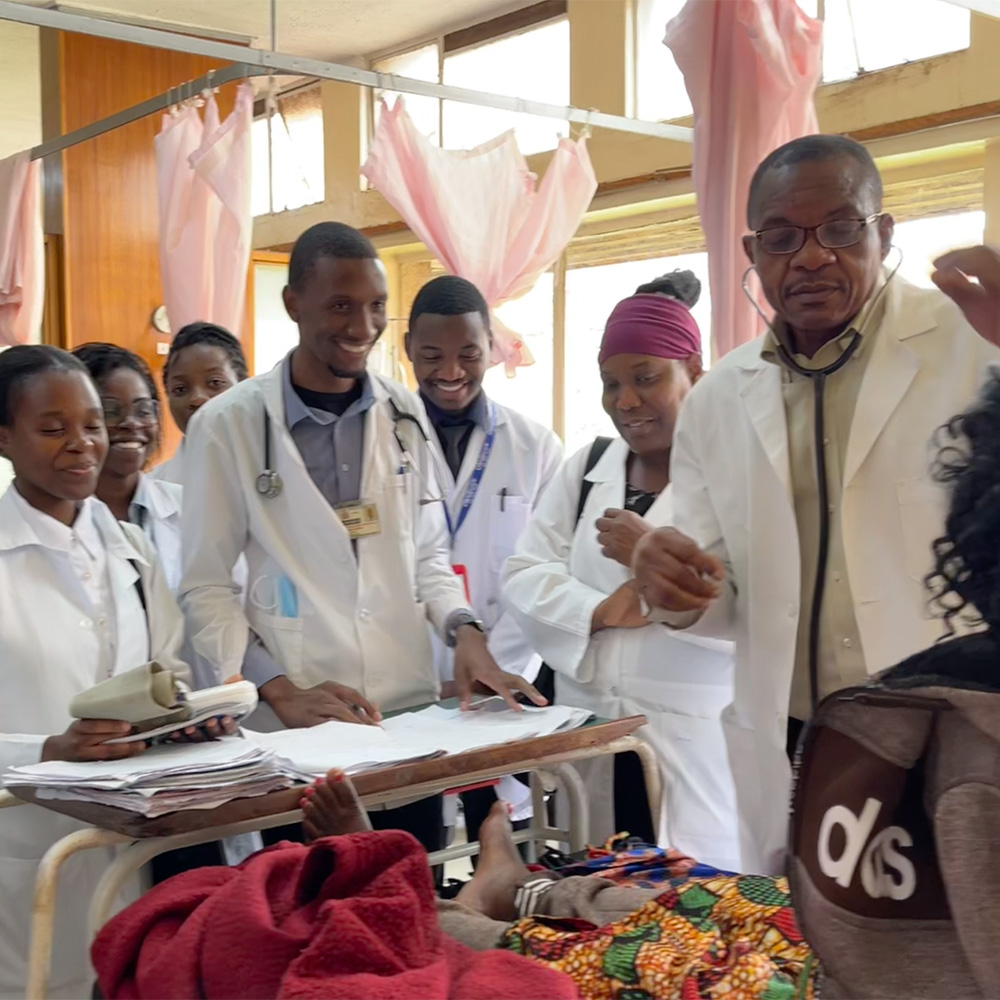Clerkship phase gives medical students earlier patient care exposure

Becoming a doctor takes years of hard work and study. Because of that, medical students hunger for real-world patient care experiences. With the new curriculum that UT Southwestern began rolling out in 2015, second-year students are now getting that exposure to patient care six months earlier in their four-year program.
That experience comes in the form of core clerkships, which follow studies in integrated basic science and clinical topics during the pre-clerkship months.
In most medical school programs, students spend the first two years in a classroom (called pre-clerkship) before doing hands-on learning (clerkship) in a teaching hospital. In the new UT Southwestern Medical School curriculum – the second phase of which launched in January 2017 – the pre-clerkship period was shortened to 18 months. That allows clerkships to start sooner, giving students the opportunity to explore more clinical fields before they select their area of medical specialty.
Members of the UT Southwestern Medical School Class of 2019, entering the homestretch of their clerkship phase, are now seeing the benefits of the revised curriculum. The specialized electives are designed to expose students to multiple options, with the hope that it will pique their interest in an unexpected area of medicine. For third-year medical student Taylor Dess, it worked.
“Anesthesiology was like that for me,” Ms. Dess said. “The residents and the attending physicians supervised us closely and actually taught us the procedures we’ll become second nature at accomplishing.”
In her rotations, Ms. Dess learned anesthesiology procedures, studied infectious disease and advanced anatomy, and participated in an ambulatory clerkship that focused on primary care across the age continuum.
Ambulatory Clerkship Directors Dr. Adrian Salazar, Assistant Professor of Internal Medicine, and Dr. Heidi Roman, Assistant Professor of Pediatrics, developed the core clerkship in ambulatory medicine, combining pediatrics with internal medicine experiences. Like all the existing clerkships, they were challenged to combine learners equipped with varying levels of experience.
Dr. Roman said that mixing second- and third-year medical students – the latter in the clinical clerkships phase – turned out to have a profound effect.
“These students are gifted people, be they in their second year or in their third year,”
Dr. Roman said. “And we have really noted a significant benefit in having students in different levels of the clerkship at the same time: The third-year students have the relative expertise and can help the second-year students, but the second-years come in fresh and bring a lot of new energy and enthusiasm.”
The core clerkships in ambulatory medicine, along with the specialized elective offerings, give students a personalized education to help them become successful clinicians or researchers – or, in some cases, both.
Dr. Arlene Sachs, Director of Student Academic Support Services and Assistant Professor of Psychiatry, and her team worked with the students on preparation for their United States Medical Licensing Examination Step 1 exam, the first of two required national board exams taken by all U.S. medical students.
“Previously, all second-year students prepared independently and all took the Step 1 at the same time,” Dr. Sachs said. “But, as part of the new curriculum, we developed a required six-week course to support students in their preparation for Step 1.
“We met individually with students to advise on best practices and to aid each student in developing a personalized study schedule. They reported on their progress with weekly surveys, which allowed us to reach out and help students stay on track for success.”
The ultimate measure of success for a student is to become an exceptional physician or researcher. The revised curriculum moves students toward that goal, arming them with the valuable skills and knowledge found at UT Southwestern, a leading academic medical center.





